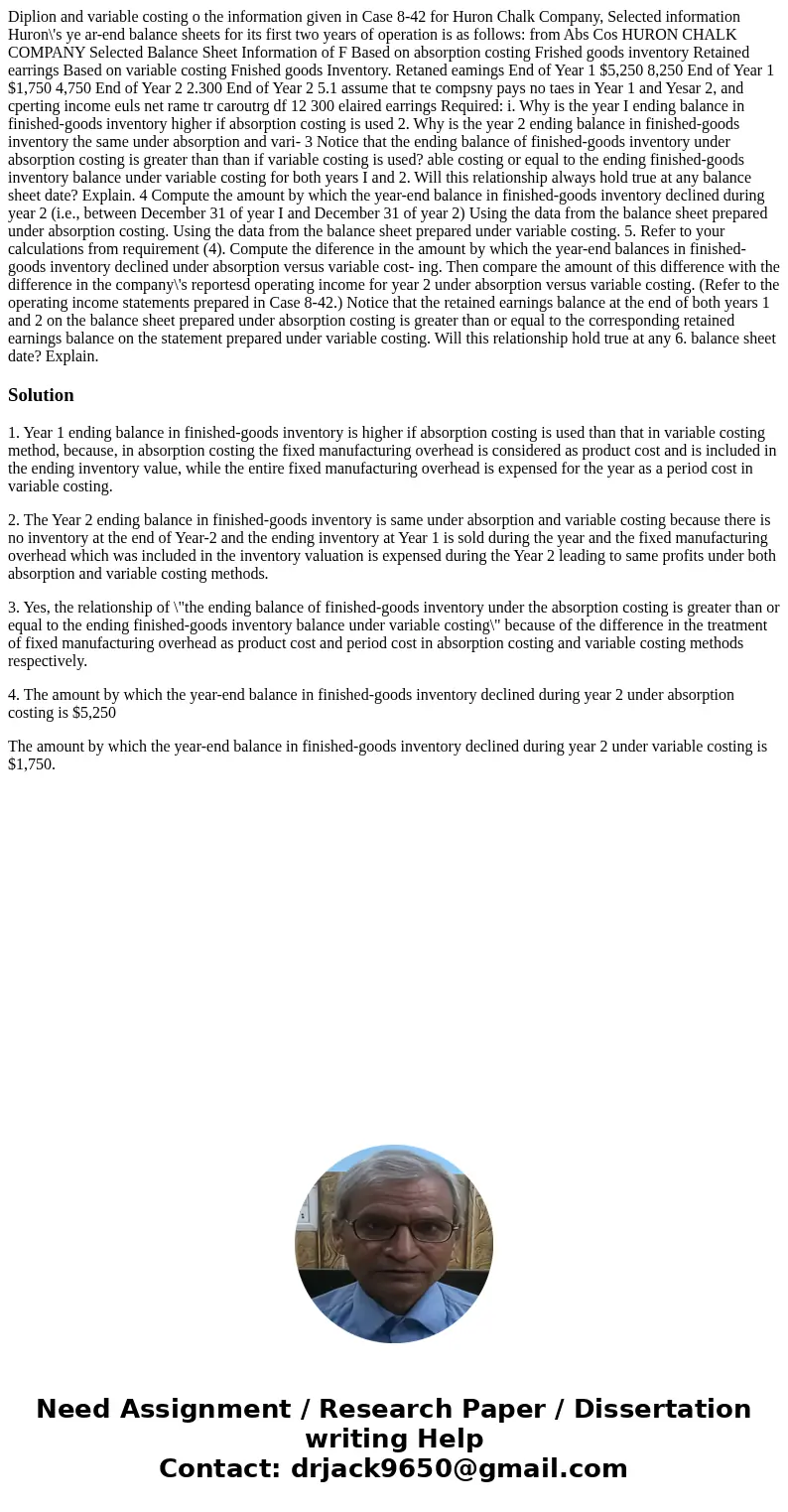Diplion and variable costing o the information given in Case 8-42 for Huron Chalk Company, Selected information Huron\'s ye ar-end balance sheets for its first two years of operation is as follows: from Abs Cos HURON CHALK COMPANY Selected Balance Sheet Information of F Based on absorption costing Frished goods inventory Retained earrings Based on variable costing Fnished goods Inventory. Retaned eamings End of Year 1 $5,250 8,250 End of Year 1 $1,750 4,750 End of Year 2 2.300 End of Year 2 5.1 assume that te compsny pays no taes in Year 1 and Yesar 2, and cperting income euls net rame tr caroutrg df 12 300 elaired earrings Required: i. Why is the year I ending balance in finished-goods inventory higher if absorption costing is used 2. Why is the year 2 ending balance in finished-goods inventory the same under absorption and vari- 3 Notice that the ending balance of finished-goods inventory under absorption costing is greater than than if variable costing is used? able costing or equal to the ending finished-goods inventory balance under variable costing for both years I and 2. Will this relationship always hold true at any balance sheet date? Explain. 4 Compute the amount by which the year-end balance in finished-goods inventory declined during year 2 (i.e., between December 31 of year I and December 31 of year 2) Using the data from the balance sheet prepared under absorption costing. Using the data from the balance sheet prepared under variable costing. 5. Refer to your calculations from requirement (4). Compute the diference in the amount by which the year-end balances in finished-goods inventory declined under absorption versus variable cost- ing. Then compare the amount of this difference with the difference in the company\'s reportesd operating income for year 2 under absorption versus variable costing. (Refer to the operating income statements prepared in Case 8-42.) Notice that the retained earnings balance at the end of both years 1 and 2 on the balance sheet prepared under absorption costing is greater than or equal to the corresponding retained earnings balance on the statement prepared under variable costing. Will this relationship hold true at any 6. balance sheet date? Explain.
1. Year 1 ending balance in finished-goods inventory is higher if absorption costing is used than that in variable costing method, because, in absorption costing the fixed manufacturing overhead is considered as product cost and is included in the ending inventory value, while the entire fixed manufacturing overhead is expensed for the year as a period cost in variable costing.
2. The Year 2 ending balance in finished-goods inventory is same under absorption and variable costing because there is no inventory at the end of Year-2 and the ending inventory at Year 1 is sold during the year and the fixed manufacturing overhead which was included in the inventory valuation is expensed during the Year 2 leading to same profits under both absorption and variable costing methods.
3. Yes, the relationship of \"the ending balance of finished-goods inventory under the absorption costing is greater than or equal to the ending finished-goods inventory balance under variable costing\" because of the difference in the treatment of fixed manufacturing overhead as product cost and period cost in absorption costing and variable costing methods respectively.
4. The amount by which the year-end balance in finished-goods inventory declined during year 2 under absorption costing is $5,250
The amount by which the year-end balance in finished-goods inventory declined during year 2 under variable costing is $1,750.

 Homework Sourse
Homework Sourse